
Great Ways to Reduce Plastic Use in Your Home
The problem of plastic is one of the major global challenges facing us today. Awareness of this issue is increasing, which is good news, but many people struggle to see how to play their part in solving it. Fortunately, there are many great ways to reduce plastic use in your home.
Plastic is absolutely everywhere. The sea of plastic that surrounds us in our daily lives can make the problem seem overwhelming, so some people think that it is out of their hands – that only politicians and big business can solve it. But while it is true that larger-scale political and business reforms are essential, there is still plenty that individuals can do.
👉 Reducing plastic use largely comes down to two things: reducing the amount that we buy, and seeking out alternatives to plastic products.
But before we delve into the solutions in a little more depth, let’s take a quick look at why we need to reduce plastic use.
Why Reduce Household Plastic Use?
The life cycle of plastic makes clear why we should reduce its use in our homes. At source, plastic takes a lot of energy to create, and is derived from finite and polluting fossil fuels.
Plastic has also been shown to be detrimental to human health during its life; many types of plastic leach harmful chemicals into the environment during manufacture, and sometimes also during use.
It is after its useful life, however, that plastic really begins to pose a threat: it can take hundreds of years – or more – to break down, meaning that it lingers, causing problems in our wider environment. Plastic is now found in huge quantities in the world’s oceans and in global food chains. If we do not all act quickly to reduce plastic use, we threaten the cycles of our planet and our very ways of life.
Why Recycling Plastic Is Not Enough
Recycling plastics is one partial answer to the problem – but isn’t a complete solution. The stark truth is that most of the plastics we encounter on a daily basis cannot or will not be recycled.
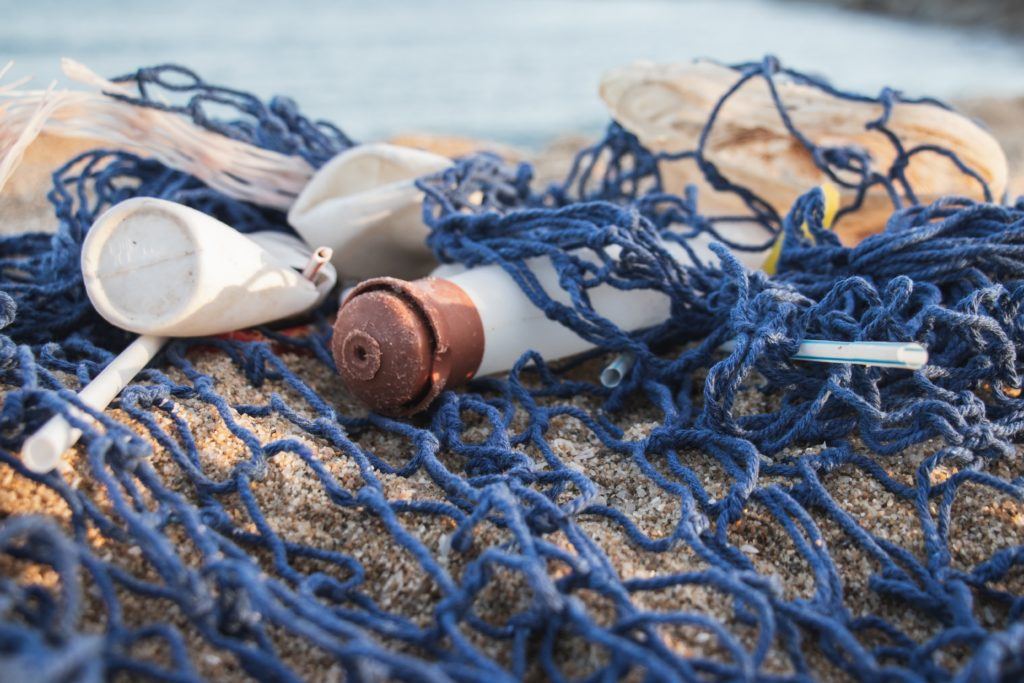
Even when plastic can be recycled, contamination can also be a big problem. You might have washed out your plastic containers and put them in the correct bin, but that doesn’t mean that everyone else will. If something hasn’t been washed out properly, it can result in everything in that bin going to landfill rather than the recycling plant.
Even plastic that is recyclable is not always recycled, for economic reasons; often, it is simply not profitable for recycling businesses to recycle lower-grade plastics. There is an urgent need for greater transparency in the recycling system, so consumers know exactly where their waste is going, what percentage really is recycled, and how much energy is required to do so.
Recycling plastic uses roughly double the energy, labour, and machinery necessary to put it in landfill. And all recycling has some environmental costs, including more trucks on the road.
What’s more, many people are shocked to learn that most plastics can only be recycled once or twice before they are downcycled, which means they are recycled into something else – such as textiles. Almost invariably, clothes or other items made from old plastic bottles, for example, cannot themselves be recycled – so they will still be a problem to dispose of at the end of their useful lives.
While we should, of course, recycle what we can, recycling alone is not enough. Reducing our plastic use and re-using what plastics we have to use is essential to tackling the problem effectively. So how exactly do we go about reducing plastic use at home?
Reduce Plastic Packaging Coming into Your Home
Plastic packaging is a major problem area within plastic waste. Food packaging generally accounts for the majority of plastic waste generated in most households, so reducing that can be a good place to begin.
Reducing Plastic Food Packaging
Here are some tips to help reduce the amount of plastic food packaging that comes into your home:
- Grow as much of your own food as possible. (You can grow some food even if you have no outside space at all; all you need is a sunny windowsill.)
- Buy unpackaged, local, organic produce wherever possible. Consider local veg box schemes, visit farm shops, etc. Buy less, but buy better to stay within budget.
- Buy household staples wholesale to reduce packaging. (Also consider ordering staples online through companies that avoid plastic packaging – such as Plastic Free Pantry.)
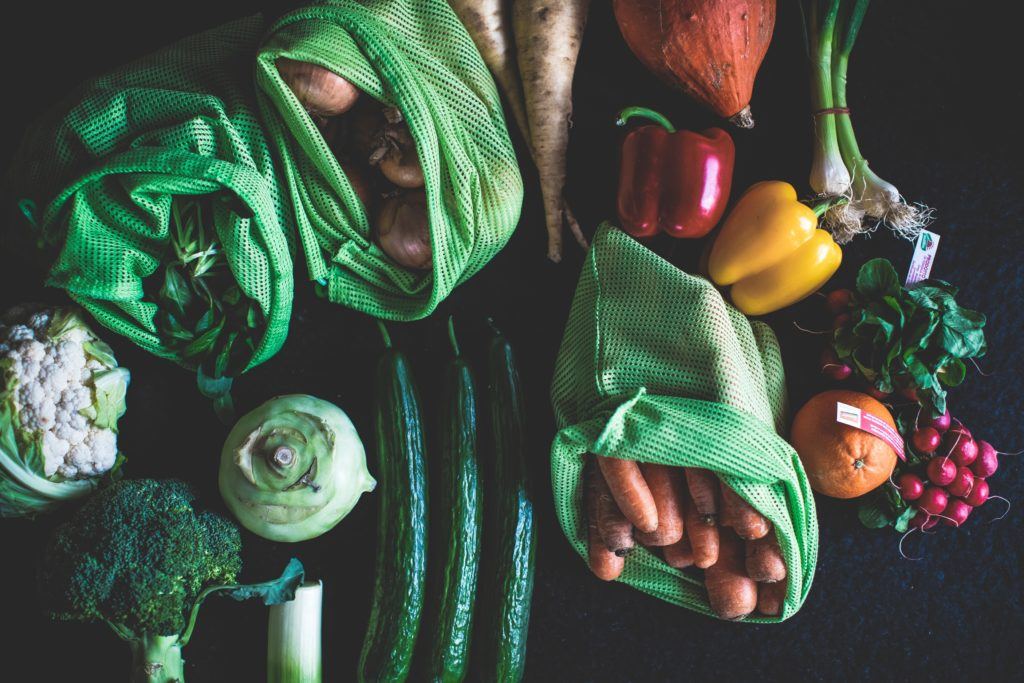
- Choose and cook with whole foods as much as possible, and avoid ready meals and other heavily packaged items. Take a list when shopping to avoid impulse buys.
- Learn new skills by making yogurts, jams, and preserves, for example, rather than buying these readymade.
- Avoid teabags that contain plastic – switch to an eco brand, or to loose-leaf tea.
- Avoid coffee capsules – grind your own instead, if possible.
- Take your own shopping bags to the shops and don’t use plastic bags. (Though doing away with single-use plastic bags is a step in the right direction, reusable plastic bags still often end up in landfill or as litter. Take a natural bag or receptacle shopping instead – for example, one made from organic cotton or hemp, or a wicker basket.)
- Take your own container to a butcher, fishmonger, bakery, or deli, and ask them to use that rather than wrapping your purchases in plastic.
📌 Read more about biodegradable plastic.
Reducing Plastic Packaging from Household Cleaners
Another source of plastic packaging in your home is cleaning products. Here are some tips to help you cut down on this source of plastic packaging:
Buy bicarbonate of soda.
This can be bought in cardboard packaging and can be used as a natural deodoriser, surfactant, and more, and can clean almost any surface gently yet effectively. It can replace many of the cleaning products bought in plastic bottles. Baking soda is great for cleaning everything from surfaces, to ovens, to dishes; use it with vinegar to clean even the most stubborn grease. Try it; you will be surprised by how effective it is at cleaning away dirt and making your house clean and fresh-smelling.
Bicarbonate of soda will also do a perfectly effective job of washing your clothes in place of an ordinary laundry detergent, and will even soften the water, increasing appliances’ longevity in hard water areas. If you require a scent to your clothing then a little organic bar soap mixed into a solution, or a few drops of essential oil would do the trick, while vinegar is great if you want a fabric softener. But really all you need for clean and fresh clothes is bicarbonate of soda, whether you are washing in a machine or by hand.
Buy (or make) vinegar.
Apple cider vinegar is one of the most useful products you can have in your home cleaning arsenal. Not just a healthy ingredient for a range of recipes, it can also be used along with bicarbonate of soda, and a few essential oils, for almost all household cleaning needs. Apple cider vinegar is gentler than white vinegar and has a more pleasant smell, and will cut through grease and grime and kill harmful bacteria just as effectively as the toxic cleaners on the market.
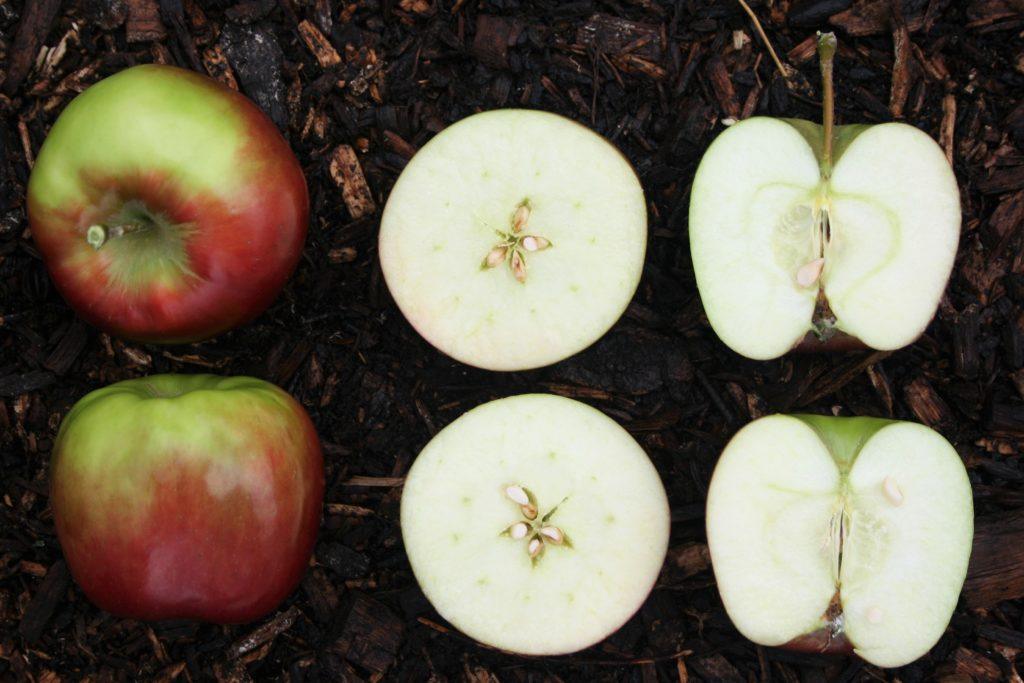
Spray a little on your windows and wipe it off with newspaper or a fine cloth. Pour into bicarbonate of soda so it fizzes up and use this to wipe stubborn messes off sinks, hobs, or worktops. Pour bicarbonate of soda and vinegar into your toilet and leave it a little while before flushing, to clean and deodorise. Use a little in your laundry as an alternative to fabric softener. You can even use bicarbonate of soda and apple cider vinegar, neat, to remove baked-on or gluey foods when washing up.
Apple cider vinegar can be bought in glass bottles with metal caps. But, even better, this type of vinegar is also very easy to make yourself, using just the scraps and cores from apples you grow or buy, in glass jars with a little sugar and water.
Really, all you need is these two simple ingredients to keep your home clean, healthy, and fresh – rather than rows of plastic bottles.
Reducing Plastic Packaging from Toiletries and Beauty Products
You may be amazed to learn that those two simple ingredients can also wash and condition your hair – so you can do away with all those plastic bottles of shampoo and conditioner.
👉 Take around one tablespoon of bicarbonate of soda and dissolve it in a glass of warm water. Give it a good stir and pour into a glass bottle, or other container; this is your ‘shampoo’. Fill another non-plastic container with one third apple cider vinegar and two thirds water. Give it a good shake; this is your conditioner.
These products will rid your hair of the build-up that comes from many shop-bought hair products, and will balance the pH of your hair and scalp. Different hair may require slightly different proportions of these two ingredients, and you may wish to add other ingredients for fragrance, such as a few drops of essential oil.
There are also many other natural ingredients that can help you to lighten or give hair a reddish hue, or combat particular issues. But these products alone will leave hair healthy, with a fresh appearance and no smell. Simplifying your hair-care regime is a great move for reducing plastic use in your home.
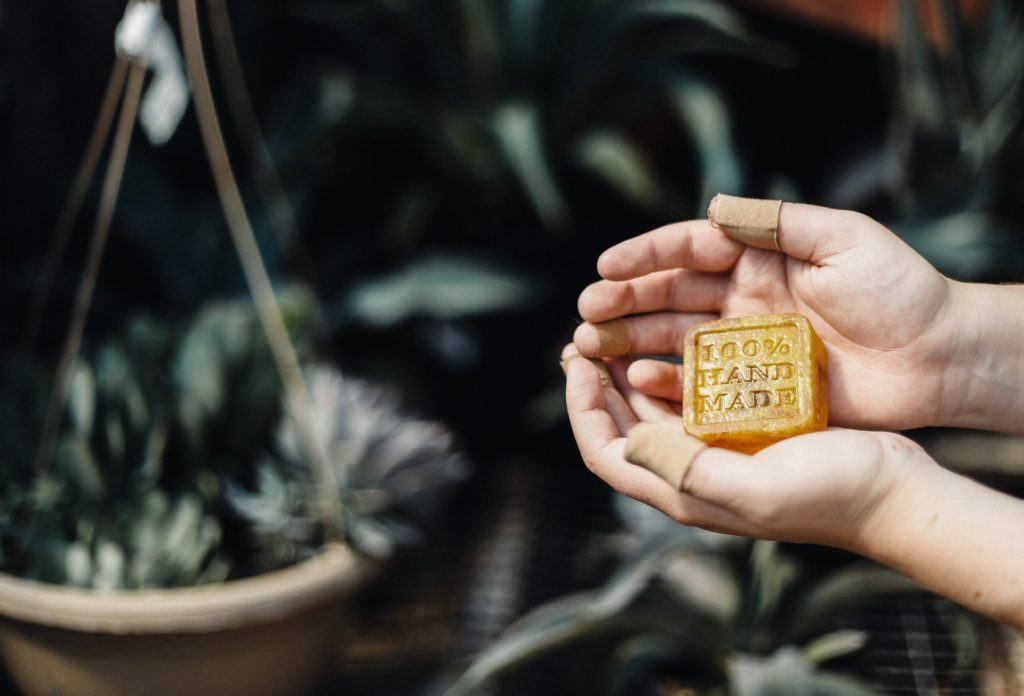
To reduce plastic packaging from other cleaning and beauty products you could also:
- Buy (or make) organic, natural bar soap, rather than bottled soaps and shower gels.
- Make organic, natural cleansers, toners, scrubs, and moisturisers to take care of your skin. (Often, these can be made using plants from your garden and other things you might find in your kitchen such as honey, oats, sugar, oils, or avocado.)
- Make your own makeup. Mascara can be made from charcoal and aloe vera, for example, and there are plenty of other ideas for making other natural makeup products. (Alternatively, you could go for a healthy, natural look by avoiding makeup altogether.)
📌 Read more about how to make your own sustainable cleaning products.
Reducing Plastic Packaging from Other Products
So many products come wrapped in plastic that it is almost impossible to avoid them altogether. But there are certain things you can do to reduce plastic packaging significantly – for example:
✔️ Buy less. (Think carefully before each purchase and only buy what’s really necessary.)
✔️ Consider secondhand options/upcycling/swapping with friends or family before buying new.
✔️ Learn new skills to become more self-reliant, and reduce the general number of things you have to buy: eg, how to sew, knit, craft, build furniture, make pottery, etc.
✔️ When you do have to buy, try to find companies offering items in plastic-free packaging.
Reduce Plastic Use in Your Kitchen
Plastic packaging is, of course, not the end of the story; most of us also have a huge array of plastic items in our homes. Those looking to reduce plastic use will want to find alternatives, where available, rather than purchasing any new plastic products. Let’s begin by looking at ways to reduce plastic use in your kitchen. You could consider:
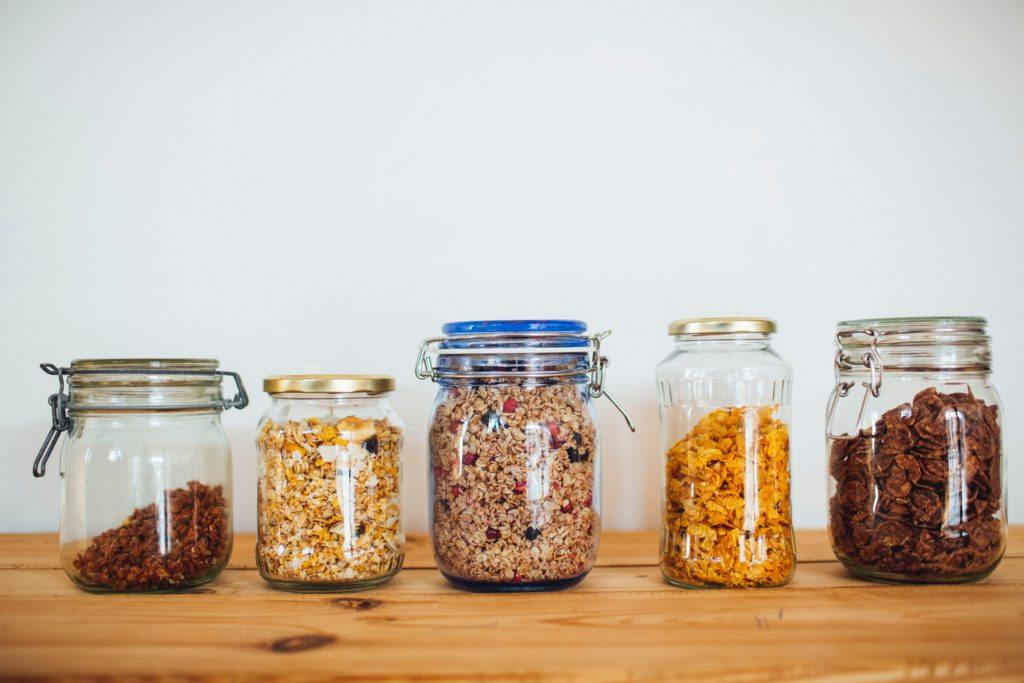
- Simplifying your cooking and avoiding purchasing any new gadgets.
- Choosing crockery and utensils made from ceramic, wood, bamboo, metal, and other natural materials. (Avoiding knives, etc, with plastic handles, and all disposable plastic products.)
- Choosing wooden rather than plastic chopping boards.
- Selecting metal or silicone washing-up bowls, draining boards, etc.
- Opting for pots and pans without Teflon coating (which is toxic when overheated), and without plastic handles.
- Using silicone, glass, or metal containers to refrigerate and freeze food, rather than plastic tubs or freezer bags.
- Buying/making organic cotton beeswax wraps to store leftovers and for packed lunches, instead of using plastic clingfilm.
Reduce Plastic Use in Living Areas
Next, let’s turn our attention to where and how we can reduce plastic in our living areas, beyond reduction of the amount of things that we buy. In all living areas you should:
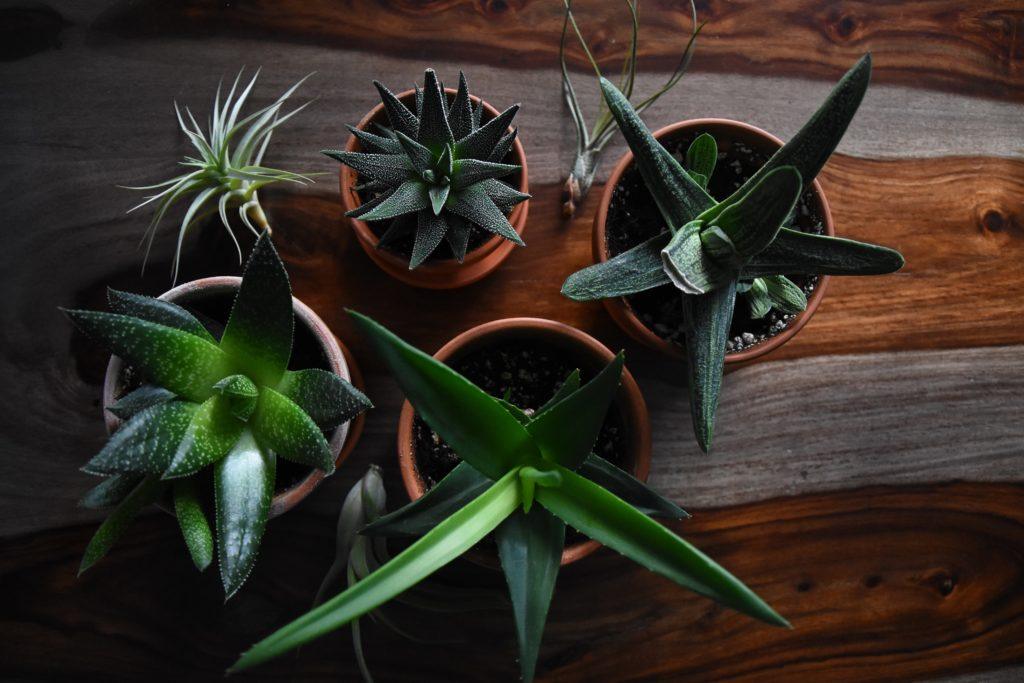
- Choose wooden/tile/stone floors or natural fibre rugs rather than plastic options like synthetic carpet or laminate.
- Choose eco-friendly, plastic-free paints and avoid plastic-coated wallpapers.
- When buying new, opt for furniture made from natural materials like wood, and items upholstered and stuffed with sustainable natural fibres. But also consider secondhand options/upcycling before making purchases. ♻️
- Choose curtains, cushions, and other soft furnishings that use natural materials. (And consider making your own.)
- If you have kids, try to choose sustainable toys made from natural materials like wood rather than plastic. Encourage natural/outdoors play as much as possible.
- When crafting, avoid glitter (as well as plastic paints, etc). Use sand for some sparkle instead. Choose coloured pencils or crayons rather than plastic pens. 🎨
- Choose wooden/bamboo/organic natural fabric covers for smartphones and other devices.
- Stream or download films/music rather than buying CDs, DVDs, Blu-rays, etc, in plastic cases.
It is very, very unlikely that you will have an entirely plastic-free living space, but you can take steps to move away from complete reliance on plastic products.
Reduce Plastic Use in the Bedroom

The biggest hiding place for plastic in most homes is the wardrobe. If you haven’t paid much attention to problems with plastics before, you may not be aware of just how many of your clothes are made from it. Polyester, nylon, polyamide, spandex, or acrylic, faux fur, faux suede, or faux leather: these are all made of plastic.
While some plastic fabrics may be more ethical and better for the environment than the alternative (in the case of fur, leather, and some other animal-derived products), they cause their own huge problems. Synthetic clothing can shed up to 700,000 microfibres with each wash – tiny bits of plastic which wash down the drain and often end up in our waterways and seas. And that’s before you even think about what will happen to them at the end of their useful life.
To reduce plastic use in your bedroom:
- Choose bedding and clothes made from natural rather than synthetic materials wherever possible.
- Carefully consider each clothing purchase, and choose fewer quality items, rather than lots of fast fashion. Whatever you buy, choose items that will last, and be aware of the true human and environmental costs of textiles.
- Consider choosing secondhand clothing rather than new clothing where synthetic fabrics may be required (such as for performance outdoors gear), and look into recycled options.
📌 Read more about sustainable fabrics.
Reduce Plastic Use in the Bathroom
Next, let’s turn our attention to the bathroom. We’ve already discussed how you can significantly cut down the number of plastic bottles there, but how else can we reduce plastic use in the bathroom? Examples include:
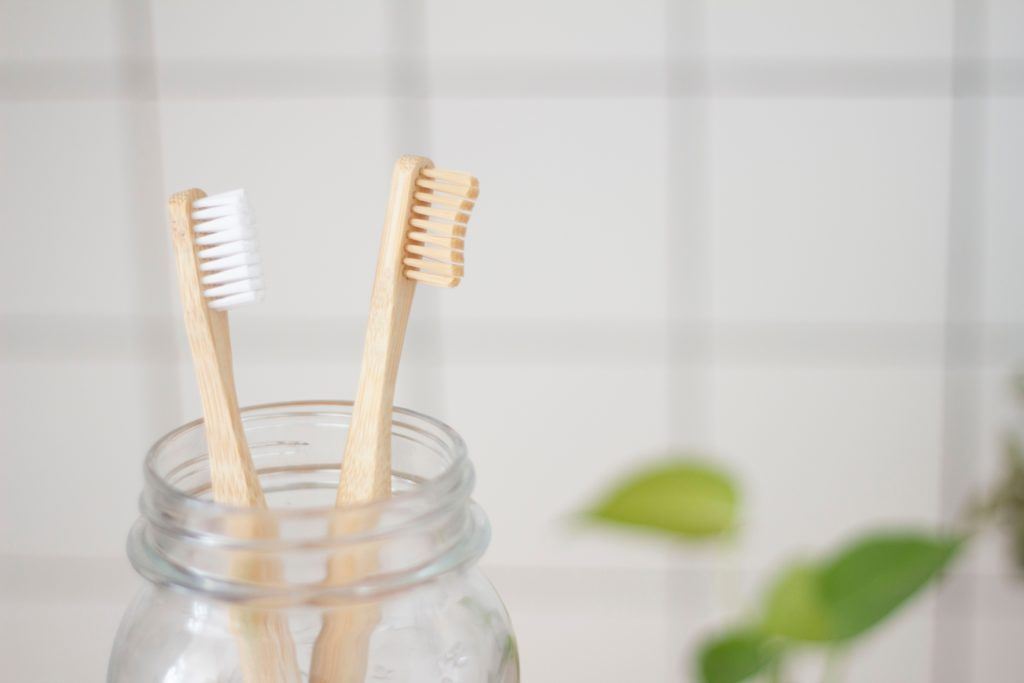
- Buying a hairbrush with a wooden handle and natural bristles.
- Opting for a bamboo toothbrush.
- Choosing a plastic-free toothpaste. (Such as Georganics Natural Toothpowder, for example.)
- Choosing an eco-friendly, plastic-free floss.
- Using cloth nappies for babies rather than disposable plastic ones.
- Avoiding wet wipes, as most contain plastic.
- For women to use a reusable silicone cup rather than other sanitary products.
📌 Read more about sustainable toothbrushes.
Reduce Plastic Use in the Garden
Finally, if you are trying to go greener, it’s likely that you’re interested in growing at least some of your own food. But, if you have one, plastic – however big or small – can accumulate in your garden too. Whether you are growing food on a windowsill, or have a large garden, plastic pots can sometimes quickly accumulate. Here are some tips for reducing plastic use in your growing efforts:
- Grow from seed or propagate your own plants as much as possible, rather than buying plants in pots.
- Consider sourcing plants (without pots) from friends’, family, or neighbours’ gardens.
- See if you can find a garden centre or plant nursery that sells plants in biodegradable or ceramic pots.
- Save your own seeds, reducing the need to buy more. 🌱
- If buying them, choose organic seeds in paper rather than plastic packaging.
- Don’t buy plastic seed pots, trays, or containers. Choose biodegradable pots (or make your own from toilet roll tubes/cardboard/papier maché/newspaper). Also consider making soil blocks, which do away with the need for seedling containers altogether.
- For larger containers, upcycle household items and use reclaimed materials.
- Use organic materials like straw or other mulches to provide extra warmth and protection for plants in place of synthetic horticultural fleece. Alternatively, use old cotton sheets or other repurposed fabrics no longer good enough for the home.
- Choose wooden/metal garden tools rather than ones with plastic handles.
- Use natural cotton/hemp/coir/jute netting rather than plastic netting to protect fruit bushes from birds. Affix with wooden stakes (make your own) or old metal tent pegs.
- Likewise, choose natural rather than plastic twine for tying in plants.
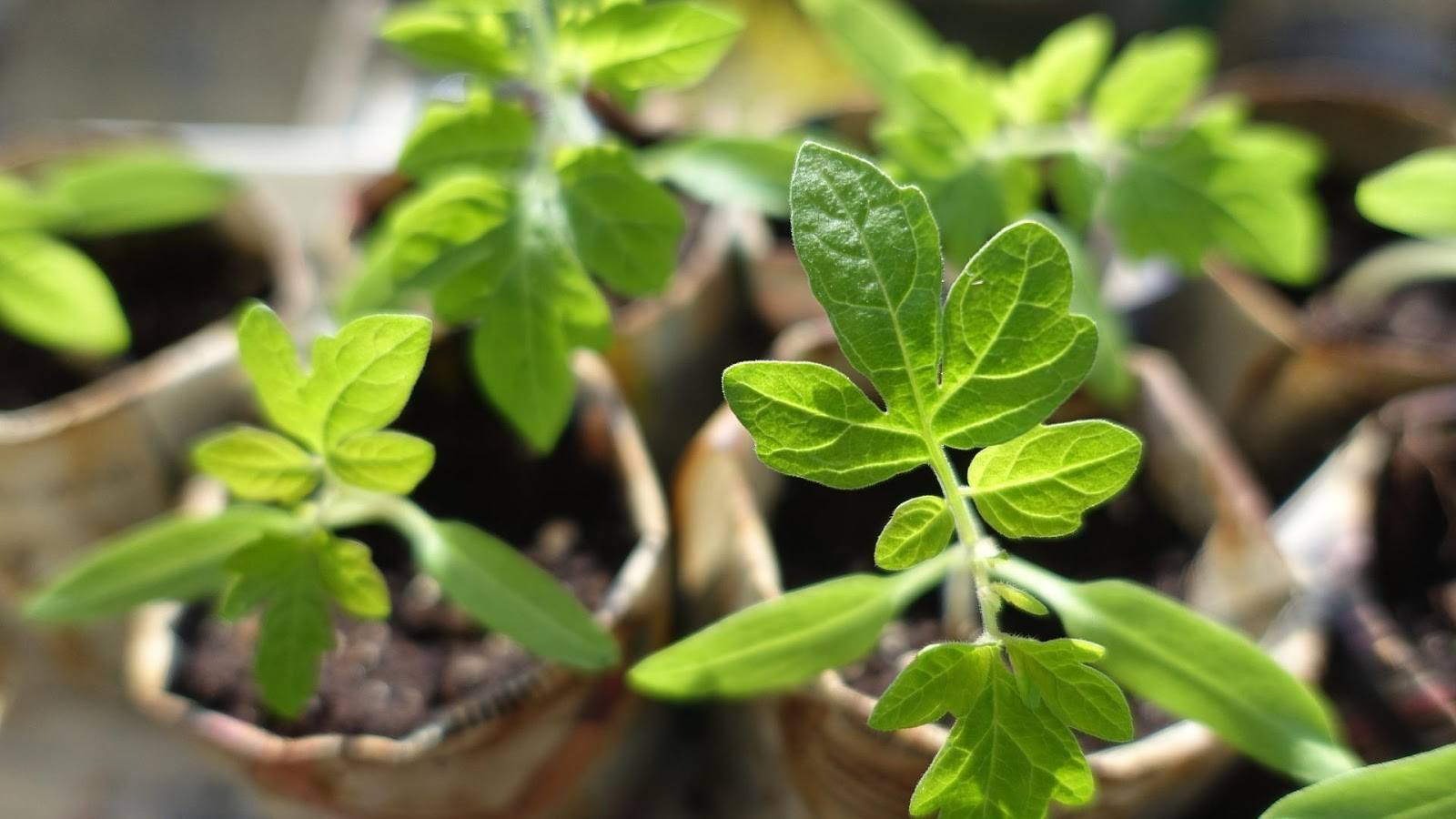
Elsewhere in your garden:
- Choose (or make your own) patio furniture with reclaimed/natural materials.
- Choose wooden/metal playsets and swings for kids, rather than plastic ones. (Or consider making your own more natural obstacle course.)
- Choose an eco-friendly natural washing line and wooden clothes pegs.
The lists above by no means cover everything that can be done to reduce plastic use in your home – but they should give you a good starting point.
Featured image by Jasmin Sessler on Unsplash
Earth.fm is a completely free streaming service of 700+ nature sounds from around the world, offering natural soundscapes and guided meditations for people who wish to listen to nature, relax, and become more connected.
Check out our recordings of nature ambience from sound recordists and artists spanning the globe, our thematic playlists of immersive soundscapes and our Wind Is the Original Radio podcast.
You can join the earth.fm family by signing up for our newsletter of weekly inspiration for your precious ears, or become a member and not only enjoy extra earth.fm features and goodies but help us grow new forests on our beloved planet.